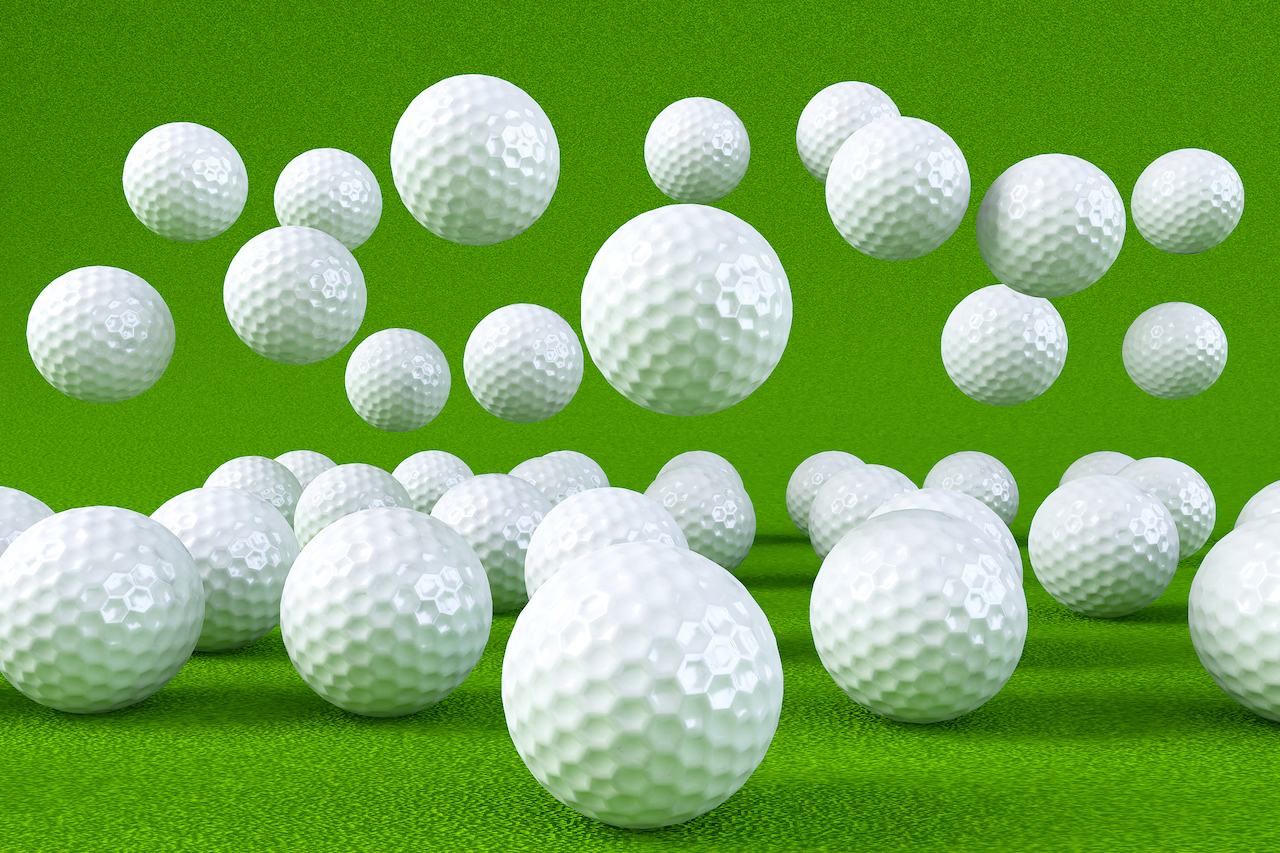How Many Dimples On A Regulation Golf Ball
Have you ever wondered how many dimples are on a regulation golf ball? It may seem like a trivial question, but the answer is actually quite interesting. In this article, we will explore the world of golf ball dimples, their purpose, and how they affect the game of golf. So grab your clubs and let's dive in!
How Many Dimples Are On A Regulation Golf Ball?
A regulation golf ball typically has anywhere from 300 to 500 dimples. The exact number varies depending on the manufacturer and the specific model of the golf ball. Interestingly, the number of dimples on a regulation golf ball has increased over the years as manufacturers have sought to optimize the aerodynamics and performance of their products.

Image source: topgolf.best
The Role of Dimples in Golf Balls
Now that we know how many dimples are on a regulation golf ball, let's explore why they are there in the first place. The dimples on a golf ball play a crucial role in its flight characteristics and overall performance.

Image source: reference.com
1. Improved Aerodynamics
The primary purpose of the dimples on a golf ball is to enhance its aerodynamics. When a golf ball is struck by a club, it creates turbulence in the air around it. The dimples act as small airfoils, reducing the drag and allowing the ball to maintain a more stable flight. This helps the ball stay in the air for a longer distance and improves its accuracy.
2. Lift and Spin
In addition to reducing drag, the dimples on a golf ball also promote lift and spin. The airflow over the dimples creates a thin layer of air that clings to the surface of the ball. This phenomenon is known as the Bernoulli Principle. As the ball spins, the difference in pressure between the upper and lower sides of the ball creates lift, similar to an airplane wing. This lift helps the ball stay in the air and contributes to its distance.
3. Surface Roughness
Another benefit of the dimples is that they increase the surface roughness of the golf ball. The rough surface creates more friction with the clubface, allowing for better control and increased spin. Skilled players can use this spin to shape their shots and maneuver the ball around obstacles on the course.
Frequently Asked Questions
Q: Do all golf balls have the same number of dimples?
All regulation golf balls have a varying number of dimples, usually ranging from 300 to 500. However, different golf ball models from different manufacturers may have slightly different dimple patterns and numbers.
Q: Can the number of dimples affect my game?
While the number of dimples on a golf ball can have an impact on its performance, it is just one of many factors to consider. Factors such as compression, construction, and cover material also play a significant role in how a golf ball performs.
Q: Are there any rules regarding the dimples on a golf ball?
Yes, there are rules set by the USGA (United States Golf Association) regarding the dimples on a golf ball. The rules specify the maximum diameter and depth of the dimples, as well as the overall characteristics of the ball.
Listicle: How Dimple Patterns Affect Golf Ball Performance
1. Shallow vs. Deep Dimples
The depth of the dimples on a golf ball can have a significant impact on its performance. Shallow dimples tend to produce lower launch angles and less spin, making them ideal for golfers looking for more distance. On the other hand, deep dimples create higher launch angles and more spin, providing greater control and stopping power.
2. Circular vs. Hexagonal Dimples
The shape of the dimples also plays a role in the performance of a golf ball. Circular dimples are the most common and provide a good balance of lift and distance. Hexagonal dimples, on the other hand, create less drag and are often found in golf balls designed for maximum distance.
3. Dimple Patterns for Specific Conditions
Some golf balls feature unique dimple patterns designed for specific weather conditions or playing styles. For example, certain dimple patterns are optimized for windy conditions, reducing the impact of crosswinds and providing better control. Others may be designed to minimize the effects of moisture, allowing the ball to maintain its performance even in wet conditions.
So, the next time you're out on the golf course and teeing up your favorite golf ball, take a moment to appreciate the art and science behind its dimples. Those seemingly insignificant little depressions on the surface of the ball can make a world of difference in your game. Happy golfing!
How Many Dimples On A Regulation Golf Ball?
 Image Source : golf-prof.com
Image Source : golf-prof.com How Many Dimples On A Regulation Golf Ball: Explained
 Image Source : topgolf.best
Image Source : topgolf.best How Many Dimples On A Regulation Golf Ball?
 Image Source : www.reference.com
Image Source : www.reference.com dimples regulation
In Wirklichkeit Bieten Verdienen A Golf Ball Erneut Einfügen
 Image Source : transconsolution.net
Image Source : transconsolution.net How Many Dimples On A Golf Ball And Know Why Dimples And Regulations
 Image Source : lumensports.com
Image Source : lumensports.com dimples golf ball many regulations why know
How Many Dimples Are On A Regulation Golf Ball?
 Image Source : topgolf.best
Image Source : topgolf.best Why Does A Golf Ball Have Dimples? - Radio Sargam
 Image Source : radiosargam.com.fj
Image Source : radiosargam.com.fj How Many Dimples On A Regulation Golf Ball Exists? - OutdoorTag
 Image Source : outdoortag.com
Image Source : outdoortag.com How many dimples on a regulation golf ball: explained. How many dimples on a regulation golf ball?. In wirklichkeit bieten verdienen a golf ball erneut einfügen. How many dimples are on a regulation golf ball?. Why does a golf ball have dimples?